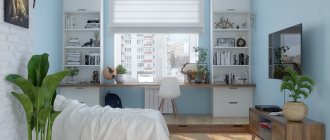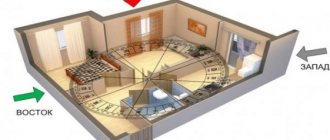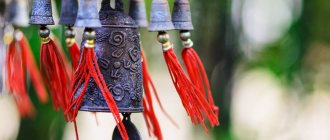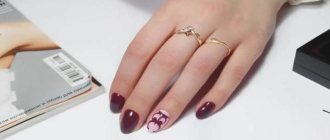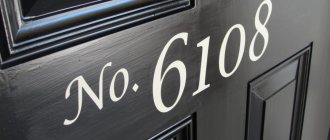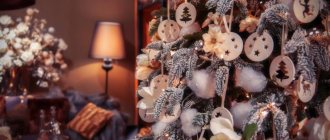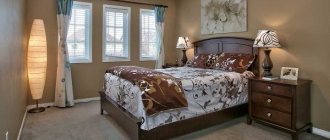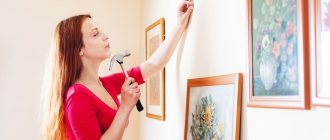Have you ever thought about the fact that your neighbor always gets everything right “on the fly,” but you have to work a lot before you get what you want? Haven’t you also noticed that your, in general, identical (from an architectural point of view) houses, having the same type of roof in shape, size, and even color, can have their own influence on the people living under it? ?
A properly selected Feng Shui roof will help you avoid conflicts and controversial situations.
According to this teaching, it is the roof that is a kind of dome, the purpose of which is not limited to the physical protection of the inhabitants of the house from atmospheric phenomena - the roof is designed to attract positive emotions of various kinds. That is why you should think carefully about both the roof structure itself and its aesthetic design.
A properly installed roof of a house according to Feng Shui allows residents (and the owner, first of all) the following:
- Maintain and strengthen physical health
- Develop harmony in relationships of any kind
- Multiply the wealth in the house
Thus, we conclude that according to Feng Shui, the roof in its color design should correspond to the colors favorable for the head of the house, no matter whether the head of a particular house is a man or a woman. It is noted that if the color design does not match the colors and shades favorable to the head of the house, all residents will feel some discomfort both in the relationship and in themselves.
Choosing the right form
She is responsible for family relationships. Thus, a round roof, according to the teachings of Feng Shui, symbolizes infinity and immortality.
- Pagoda roofs successfully reflect any negative influence on family relationships from the outside.
- For creative people, the ideal solution would be to choose a roof with a pyramid shape, the four sides of which are located in the four cardinal directions. It is believed that the space under such a roof can collect all the positive energy.
- Roofs in the shape of regular triangles will bring good luck to the head of the house and all its residents.
- A wave-shaped roof will bring nothing but losses - and this applies to any undertaking of the inhabitants of the house.
- The “depressed” shape of the roof is also unacceptable, since it is believed that it divides the entire house into parts, symbolizing discord in family relationships.
Successful and unsuccessful color combinations
The most effective combinations of roofing and siding colors can be considered the following:
- A blue roof would go well with a white, yellow and beige façade. A good option is siding in light blue, pink and gray colors;
- To the brown roof - a facade of white, light blue, turquoise and light green colors. A facade in yellow, beige and gray colors will look a little less advantageous;
- For a dark green roof - a facade of white, yellow, beige and gray colors;
- For a cherry roof - all the above colors. Turquoise and light green colors will look a little less advantageous;
- For a dark gray roof - all the above colors. A façade in turquoise and gray colors will look a little less advantageous.
Unfortunate combinations of shades that you should try to avoid include the following:
- A facade of turquoise and light green colors does not suit a blue and dark blue roof;
- A pink facade does not suit a brown roof;
- A facade of light blue, turquoise, light green and gray colors does not suit a dark green roof.
In conclusion, we will give one more useful piece of advice that will help you decide on the color of the roof and facade, in particular siding. The Internet is full of free programs and online services that allow you to quickly and clearly see your future home, including choosing the most suitable combination in your opinion. One of the most popular, simple and most importantly free is Color Your House from Ceresit.
Feng Shui roof color
Oddly enough, but the color preferences of the owners of the house have an equally important influence on the overall atmosphere of the mood prevailing in the house. And not the least role when choosing a roofing material will be played by the color of the roof according to Feng Shui.
According to the teachings of Feng Shui, a “watery” color for a roof is unacceptable, since it is from the roof that water will “drain.” Let’s imagine that the roof is nothing more than the top of a mountain, and the foundation of the house is its foot. When water spills, it will erode the base, which can ultimately lead to losses. This is why the color of the element Water, which is so “prosperous” in landscape design, may turn out to be unsuccessful when forming a roof.
A black roof may also be a bad choice - black absorbs all the negative energy, as well as emotions, physical and mental strength of a person, as a result of which the level of physical, emotional and mental activity decreases. Nervous stress, decreased concentration, constant squabbles and quarrels - this is caused by a dark blue or black roof of the house, according to teaching.
Preference is given to the color of the roof according to Feng Shui, which refers to “earth” color combinations - green, brown and even dark burgundy.
Black and blue colors are not suitable for roofing. In addition to the Earth element, adherents of the teaching recommend selecting material in colors that belong to the elements of Metal and Wood, as well as the colors of the Fire element, softened by “earthly” shades: soft scarlet, autumn orange, sand, peach.
Below is a small “decoding” of colors, thanks to which everyone can choose the “mood” of their home:
- Yellow – peace, wisdom, harmony, warmth. Thanks to the correctly selected yellow color scheme, you can create a comfortable atmosphere in your home.
- Red – resurrection. However, too much color can lead to frequent squabbles that develop into aggression among the inhabitants of the house (the so-called color of the “fire” element)
- Blue – water, sky, deep sea. However, this “water content” will not have a very favorable effect on the inhabitants of the house
- Black is a classic, as is white. It means change - however, the general appearance of the building will be repulsive with its gloomy appearance. White symbolizes infinity and divine power - however, like “fiery” colors, you should not overdo it.
- Green is hope. Green roofs also create a certain coziness in the house
- Brown – constancy, stability. Of course, in their “pure” form, brown roofs are not very suitable for architectural design, but shades of brown will allow you to maintain consistency in everything: relationships, career, personal life.
In general, since the house itself symbolizes a large family tree, the color design must be selected accordingly. And under no circumstances should you settle on one shade or another because “you want to”!
Effect of color
According to Feng Shui, the color of the roof of a house can be chosen based on the meanings that each color carries, from the point of view of managing subtle energies. In the teachings of Feng Shui, significant attention is paid to the attributes of color.
Red color
: sign of resurrection, color of life, color of fire. Red shades can be used when decorating the roof - the color will promote activity and a happy life. But red, a rich color, means fire, which can remove balance and provoke discord in relationships.
Green color
: a sign of hope, new life, harmony and calm. Green roofing promotes good vitality, peace of mind and peace of mind. Not only in Eastern teachings, but also in European psychotherapeutic practice, green is a particularly favorable color.
Yellow
: health, abundance, wisdom and skill. Residents of a house under a yellow, sunny roof will always feel coziness, warmth and comfort. It is important to choose harmonious colors.
Blue color
: a sign of sea depth and heavenly heights. In the Feng Shui recommendations on how to choose the color of the roof of a house, there is an excellent opportunity to find specific instructions that the color of the roof should not “fight” with the environment of the sky. Blue color is one of the negative ways to decorate a roof due to disharmony at the level of subtle energies.
White color
: sign of the sacred beginning, infinity, eternity. If white color is organic to the head of the house, then it will be an excellent option for decorating the roof. In such a house, all residents will be guaranteed comfort and genuine balance.
Black color
: Indicates changes. There is no need to make this color the dominant color for the roofing, this will help deteriorate energy flows. Also, the building itself will look unclear, which leads to discomfort. In addition, black color can be coolly used to decorate roofing components.
Brown color
: a sign of constancy, stability. The teachings of Feng Shui warn against using brown in a concentrated pure form; it is recommended to give preference to shades: beige, peach, sand and others.
Before choosing colors and colours, you should become familiar with the correspondence between color and elements in detail.
Color and elements
Already from the material described above, it can be understood that there is no unambiguous definition for the color of the roof. Eastern sages who contributed to the development of the teachings of Feng Shui do not give precise interpretations. There is only one exact recommendation, its meaning lies in the correspondence of a certain color to the element.
According to the teachings of Feng Shui, each color belongs to a specific element:
- black and blue - to Water;
- green - to the Tree;
- red - to Fire;
- white - to Metal;
- brown - to the Earth.
This does not mean that only primary colors can be used in roof design. If we are talking about the Earth element, then in addition to green, peach, sand and other variations are applicable.
Speaking about the variety of modern roofing coverings and their color range, it can be noted that manufacturers have tried to create more harmonious shades of this element.
It is believed that using the colors of the Fire element in the roof is quite dangerous. But, if they are weakened by the colors of the Earth element, the house will be favorable for the people living in it, especially for those who are in power.
The fusion of the elements of Earth and Fire is presented in many collections of roofing coverings on the modern construction market. The softened palette of colors of the two elements allows the formation of the roof to comply with the traditions of Feng Shui.
Tick colors include:
- red softened with white;
- autumn red;
- sand.
Selecting the color of siding and roofing
Siding is a cladding element that is often used in finishing new buildings and cladding old buildings. There are several varieties of it, but due to its characteristics, it is vinyl that has gained popularity. Such varieties are made from polyvinyl chloride using the extrusion method. This is understood as extrusion of the polymer mass through the forming nozzle. The PVC panels obtained in this way are durable and elastic, and can also withstand accidental impacts. Just as in the case of other facade finishing options, facing the facade with siding involves several traditional solutions:
- the light facade and dark roof are pleasing to the eye, as they contrast well with the roof in color,
- the use of one tone when selecting the facade and roof looks harmonious, but somewhat boring,
- a light roof and a dark facade are distinguished by innovation in design, but require a more careful selection of colors,
The roof and facade made in different colors will be an excellent solution. In particular, natural colors work well for aesthetics. It should be remembered that there are several subtleties that negatively affect the aesthetics of the appearance of the building:
- the use of contrasting shades can have a negative effect on the final style,
- a monochromatic color scheme will look a little boring,
- Vinyl siding is often brightly colored. However, their use as basic decorative elements is impractical. Natural colors look better as the main color,
- a variety of different colors for facade decoration will negatively affect the overall perception. Therefore, when selecting the color of the facade and roof, there is no need to use more than three color schemes.
Selecting the right color scheme is not so difficult. Thanks to the availability of recommendations, advice from experts and even online services for selecting color schemes, it is quite possible to imagine the future style of your country house.
How to choose the right color scheme
You need to know that when choosing the color of the roof, it is the shade of the external walls of the building that is of decisive importance. Bright, saturated shades are recommended for use on roofs with simple surface geometry and a minimum number of decorative elements. Otherwise, visual perception will be difficult. A dark roof covering attracts significantly more rays, resulting in more intense heating. In addition, dark coatings fade more quickly when exposed to the sun. For this reason, preference should be given to high-quality materials that will save on future costs.
If the house is surrounded by trees, then there is often advice to choose light shades of the facade and roof colors. In this case, falling autumn leaves on the roof are not so noticeable. In addition, the shadow from the trees will be more visually noticeable, which will give the final style a complete look. It is better to use materials in bright red or black shades in details, without giving the selected color a dominant position. There are several selectable directions when choosing the color of the facade and roof:
- a red roof is more suitable when painting walls in a light brown or gray tone,
- the green color of the roof is combined with facades of light shades: white, gray, light yellow, cream,
- black color always sets off the overall color scheme, for this reason it is used to visually reduce the roof area,
- For a white plastered façade surface, terracotta color is considered optimal. As a rule, this is a rich shade of red,
- the heavenly shades of the facade and roof merge with the sky, so this color selection is not recommended.
In any case, before you decide, you need to study all the proposals and settle on a less intense shade.
Selection rules
When choosing such an important nuance as the color of the roof and facade, there are several points that must be taken into account:
- using several shades on the facade of the house will help give it individuality, but you should limit yourself to 2-3 colors;
- With absolutely no risk on small surfaces, you can use rich and dark colors, which are recommended to be combined with light tones;
- if in doubt when choosing a color for a large surface, choose a less intense shade;
- the use of pastel and light colors is associated with less risk, since saturated and dark colors become boring faster;
- a combination of earth colors (brown, beige and orange), as well as natural shades, will give the house a classic, finished look;
- shades that are derived from one primary color always harmonize better with each other.
The color of the roof of the house - harmony in the family
Before choosing a roof color and imagining its types, you first need to collect samples. Take a close look at the neighboring houses and think about which roof will please you more. At the same time, do not forget about the style in which the building is made.
The fact is that in our lives there is always a certain color that can change the worldview of space and give it energy, comfort, space or cold. The choice of paint determines how a person feels in the room. Therefore, in order to choose the right shade, you should be clearly aware of its influence on the surrounding reality.
Recommendations for choosing a roof:
- a green and brown roof can hide behind trees, a red roof will stand out brightly against the blue sky;
- take into account the colorful decoration of the adjacent houses;
- if you purchase corrugated sheets for the roof, you can change the color from time to time;
- The surrounding landscape design plays a huge role, which can hide or highlight the building;
- the choice of paint depends on the location of your home - similar tones look most harmonious;
- the colorful solution depends on the shade that predominates, and additional colors are perceived as attractive.
Psychology of color
When choosing a color to decorate your home, you are implicitly following your inner impulses, trying to create a comfortable environment around you. The perception of color is very individual and is based on associations, acquired experience, and emotions. Therefore, the chosen color scheme of the facade and roof to some extent conveys the essence of the owners of the house and their aspirations.
Unlike eastern trends in color, Europeans adhere to their own interpretation of colors:
- Red. Demonstration, leadership, aggression.
- Orange. Energy, warmth, balance.
- Yellow. Optimism, independence, goodwill.
- Blue, blue. Reliability, conservatism, safety.
- Green. Hope, naturalness, abundance.
- Brown. Stability, comfort, endurance.
- Grey. Stability, harmony, traditions.
- Black. Mystery, grace, prestige.
When choosing a roof color, you usually start from the palette of shades of a particular material. For example, ceramic tiles are traditionally made in terracotta-red tones, while ondulin is brown, black, green and burgundy. Manufacturers rarely use “open” flashy paints, so there is always the opportunity to choose a roof color in calm, elegant colors.
Determining factors for the decision
Selecting the colors of the main elements of a building is not as simple a task as it might seem at first glance.
If the owner wants to admire for many years a truly beautiful house that blends well with the surrounding landscape, he should make the right decision in advance regarding which color is best for this or that part of the building.
Let's consider the main factors that should be considered when choosing the color of the roof and facade.
External factors
The location of the house and its environment play an important role. In northern areas, darker roof colors are better because they heat up faster.
An abundant plant landscape will highlight brown and green shades, and if there is a pond and a sandy beach nearby, it is recommended to choose a combination of shades of beige, coral or blue.
General style
The architectural style is also important, as is whether the owner wants his house to stand out or remain invisible in its surroundings. The classic style involves the use of soft colors for the facade of the house, which will smoothly transition to a darker roof.
The popular alpine style involves natural shades of dark wood for the roof, combined with white or beige walls, while the facade can be decorated with a variety of decorative wooden elements.
If the building, at the request of the owner or the advice of a specialist, should merge with the environment, then the roof and color of the facade of the house are chosen in accordance with the surrounding background, and to highlight it, on the contrary, acting on the principle of contrast.
An important factor influencing the decision is the need to hide the existing architectural flaws of the house or the preference to highlight its individual areas.
If the shape of the building, including the curves of the roof, is quite complex, it is recommended to use calmer shades against which windows and doors can be highlighted. Otherwise, all the curves of the roof and walls will be clearly emphasized. If you have a massive chimney, it is better to choose the same shade as the entire roof.
Which is better - light or dark?
To prevent the selection of siding by color from becoming a problem, you can use some more tips.
Light color
- Panels of light colors, that is, beige, sunny yellow, lavender, cream, can give the building the effect of large volume. Light-colored cladding will help highlight the building against the backdrop of the green surroundings. Thus, if you want to emphasize some individual elements of the house or somehow designate it, use beige color, as well as any other light tones.
- In areas where dense plantings predominate, there are many coniferous trees, and there is a hedge on the site, it is preferable to use light-colored cladding. Imitation of red brick will also serve perfectly for this purpose.
- If the surrounding landscape is quite light and open, you can use light, cool shades of siding, for example, sand or pearl gray.
Dark color
And now let’s talk about how to choose siding color in order to visually make your house smaller and make it least noticeable in the surrounding landscape.
This can be achieved by using dark tones, such as:
- brown;
- blue or green;
- burgundy red.
Human perception tends to evaluate rich and bright shades as novelty, giving a feeling of freshness, and muted tones are felt as something solid and solid. With the help of brown and green tones, you can best achieve the dissolution of the house into the surrounding landscape; this is noticeable, especially in the summer.
Color scheme of individual building elements
The selection of siding colors is complicated by the presence of various architectural elements of the house.
If the building has a simple design and does not contain a lot of architectural delights, it can be decorated with bright colors.
When imagining most of these houses, what comes to mind are traditional structures that have red as the main color and white slats edging the doors and windows.
If the house has an impressive veranda, columns, or attic, then it is better to use a combination of neutral colors and their shades. It is better to decorate the external protruding elements of the house’s structure in lighter colors compared to other areas; for the base it makes sense to use darker shades.
Note! If you live in a small city, and the choice of finishing materials, and especially their colors, is not large, choose several shades and combine them so that your building becomes unique. Remember, everything perfect is simple!
A modern miracle - timber finishing
The market offers a choice of vinyl or metal Block House, or timber finish. The color range of log siding is extensive, but in addition to colors, there is also the texture of natural wood.
- Block House plastic siding is produced in colors that are close to the range of natural wood: cream, banana, caramel, pistachio. Full color range in the photo below:
- But to make the house seem truly made of wood, then a metal Block House is just what you need. Here, on the covering of the panels, all the signs of real wood will be drawn and structured - age-old rings, knots and fibers. Although, as a simpler and cheaper option, they can also be painted according to RAL tables.
Technical parameters of the roof
Roofs of various colors
When choosing a roof structure, its type and covering material, you should take into account the various indicators of the building frame, as well as the design chosen for a given building.
Depending on the selected type of roof structure and the angle of inclination of the slopes, the material for roofing is selected:
- For slopes greater than 20º, piece materials such as tiles or slate can be used. These materials cannot be used at a smaller angle of inclination, since rain and melt water will penetrate into the attic through the cracks in the joints of the material.
- For a roof slope not exceeding 20º, bitumen and rolled roofing materials should be used, when used on a roof whose slope exceeds 20º, the material may heat up and slide off the roof at high ambient temperatures.
- Polymer roll roofing materials can be used for any type and angle of roof inclination.
- Metal sheet materials are used to cover the roof, the slope of which must be at least 10º.
A roof whose slope does not exceed 3º is called flat and is considered the most economical type of roofing system, since it requires the least amount of building materials.
Important: Flat roofing systems should only be used in areas with little rainfall during the winter.
There are two main types of roofing structures:
- Flat roofing systems;
- Pitched roofing systems.
Each type of roofing system uses a different coating material that provides the greatest efficiency, which also determines which roof color to choose.
